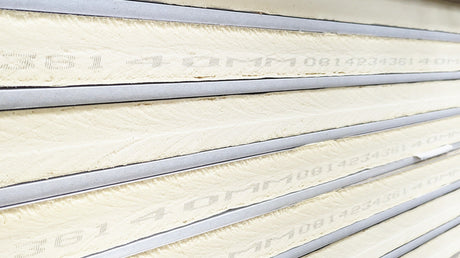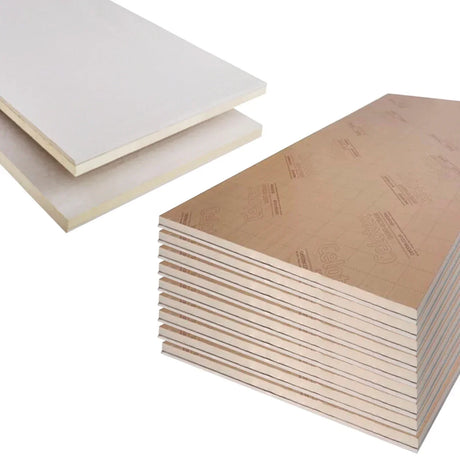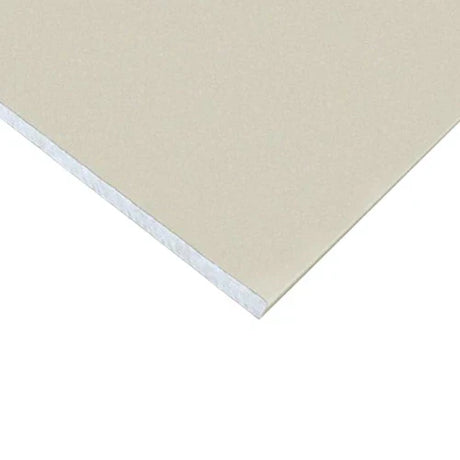When it comes to transforming your garden's perimeter, the fencing style you choose will impact far more than just your property's appearance. The right fence becomes a guardian of your privacy, a shield against the elements, and a defining feature that enhances your outdoor space for years to come. Yet with so many options available, making the right choice can feel overwhelming—particularly when you're weighing the merits of two of Britain's most popular timber fencing styles.
Across the UK, from the windswept moors of Yorkshire to the sheltered suburban gardens of Surrey, two fencing styles consistently prove their worth: feather edge and hit-and-miss fencing. Each offers distinct advantages that make them suitable for different situations, climates, and aesthetic preferences. Understanding these differences isn't just about choosing what looks appealing—it's about selecting a solution that will perform reliably in your specific environment whilst delivering the functionality you need.
This comprehensive guide will walk you through everything you need to know about both styles, helping you make an informed decision that balances practicality with visual appeal. Whether you're a seasoned DIY enthusiast or embarking on your first major garden project, we'll ensure you have the knowledge to choose the perfect fencing solution for your needs.
Understanding Feather Edge Fencing: The Traditional Choice
Feather edge fencing represents one of the most enduring and practical solutions in British garden design, offering a time-tested approach that has protected properties across the UK for generations. This classic style features overlapping vertical boards that are specially milled to create a tapered, or "feathered," edge—a design that allows each board to nestle snugly against its neighbour, forming a robust, weather-resistant barrier that's both functional and attractive.
The construction methodology behind feather edge fencing reflects centuries of practical experience in dealing with Britain's challenging climate. Each feather edge board is typically mounted onto horizontal arris rails, which are triangular-section timbers that provide excellent fixing points whilst allowing water to run off effectively. These rails are supported by sturdy fence posts, usually at 1.8-metre centres, with gravel boards at the base protecting the main fence boards from ground moisture and potential rot. This systematic approach creates a fence that's not just visually appealing but engineered to withstand the test of time.
Modern feather edge systems have evolved to incorporate the best of traditional craftsmanship with contemporary materials science. Quality suppliers like Travis Perkins and Jewson now offer pressure-treated feather edge boards that resist decay and insect attack for decades, whilst maintaining the natural beauty that makes timber fencing so popular. The result is a fencing solution that combines the reliability our predecessors depended upon with the durability that modern homeowners demand.
The Compelling Advantages of Feather Edge Design
The primary strength of feather edge fencing lies in its ability to create an impenetrable visual barrier that transforms your garden into a private sanctuary. When properly constructed with overlapping boards, this style offers complete screening that's particularly valuable in densely populated areas or where neighbouring properties sit close together. The solid construction means you can enjoy your outdoor space without concern for prying eyes, making it ideal for everything from children's play areas to intimate garden dining spaces.
From a structural perspective, feather edge fencing demonstrates remarkable wind resistance when correctly installed. The overlapping board design distributes wind loads across the entire fence structure rather than concentrating stress at individual fixing points. This characteristic has proven particularly valuable in exposed locations, where traditional panel fencing might struggle against persistent winds. Leading timber specialists like Arnold Laver and International Timber have documented cases where well-built feather edge fences have withstood decades of harsh weather conditions that would have destroyed lesser alternatives.
The aesthetic appeal of feather edge fencing cannot be understated, particularly for properties where a traditional British garden atmosphere is desired. The natural texture created by the overlapping boards casts subtle shadows that change throughout the day, adding visual interest whilst maintaining the clean lines that complement both period and contemporary architecture. This timeless appeal explains why feather edge remains the preferred choice for many conservation areas and heritage properties across the UK.
Considering the Limitations
Despite its many advantages, feather edge fencing does present certain challenges that must be considered in your planning process. The solid construction that provides excellent privacy also means that wind cannot pass through the fence, creating potential pressure points during storms. In particularly exposed locations, this can lead to increased stress on fence posts and foundations, potentially requiring more robust installation methods or additional wind-loading considerations.
Maintenance requirements for feather edge fencing can be more demanding than some alternatives, particularly in areas exposed to driving rain or persistent moisture. The overlapping board design can create pockets where water accumulates, potentially accelerating wear if the fence isn't properly treated and maintained. However, this challenge is easily managed with quality pressure-treated timber and regular application of appropriate wood preservatives—a small price to pay for the fence's many benefits.
The visual weight of feather edge fencing may not suit every garden style, particularly in ultra-modern landscapes where lighter, more minimalist approaches are preferred. The traditional appearance, whilst cherished by many, can sometimes feel overwhelming in smaller gardens or where a more contemporary aesthetic is desired.
Exploring Hit-and-Miss Fencing: Contemporary Functionality
Hit-and-miss fencing represents a sophisticated approach to garden boundary solutions, offering a clever balance between privacy and openness that has made it increasingly popular across modern British landscapes. This innovative design alternates fence boards on opposite sides of the horizontal rails, creating controlled gaps that allow air movement whilst maintaining a substantial visual barrier. The result is a fence that appears solid from most angles whilst providing the airflow benefits that make it particularly suitable for challenging locations.
The engineering principles behind hit-and-miss fencing demonstrate thoughtful consideration of both aesthetic and practical requirements. By positioning boards alternately on either side of the horizontal rails, the design creates a semi-permeable barrier that reduces wind loading significantly compared to solid fence styles. This characteristic has made hit-and-miss fencing particularly popular in coastal areas and exposed upland regions, where persistent winds can challenge traditional solid fencing systems.
Contemporary manufacturers like Wickes and Selco Builders Warehouse have embraced hit-and-miss designs, offering precision-cut boards and comprehensive fixing systems that ensure professional results even for DIY installations. The availability of pre-calculated spacing guides and professional-grade fixing hardware has democratised access to this sophisticated fencing style, making it achievable for homeowners who want to create something special in their gardens.
The Strategic Benefits of Hit-and-Miss Design
The standout advantage of hit-and-miss fencing lies in its exceptional wind resistance, achieved through the gaps that allow air to flow through rather than building up pressure against a solid barrier. This characteristic makes it particularly valuable in locations where conventional solid fencing might struggle, such as hilltop properties, coastal gardens, or areas prone to strong prevailing winds. The reduced wind loading also translates to lower structural requirements, potentially reducing both material and installation costs whilst improving long-term reliability.
From an aesthetic perspective, hit-and-miss fencing offers a contemporary appearance that complements modern architectural styles whilst maintaining sufficient substance to provide meaningful privacy. The alternating board pattern creates visual depth and interest that changes throughout the day as light angles shift, providing a dynamic element that can enhance garden design. Leading landscape architects increasingly specify hit-and-miss fencing for projects where traditional solid boundaries might feel too imposing or where planning requirements favour less visually intrusive solutions.
The double-sided nature of hit-and-miss fencing provides another significant advantage, particularly for boundary fences shared with neighbours. Unlike traditional feather edge or panel fencing, which typically shows structural elements on one side, hit-and-miss construction looks equally attractive from both directions. This characteristic eliminates potential neighbour disputes about fence orientation whilst ensuring both properties benefit from an attractive boundary treatment.
Understanding the Trade-offs
The partial privacy offered by hit-and-miss fencing, whilst perfect for many applications, may not suit situations where complete screening is essential. The gaps that provide the fence's wind-resistance benefits also mean that determined observation can still occur, making this style less suitable for areas where absolute privacy is paramount. However, for most garden applications, the semi-private nature proves ideal, providing sufficient screening whilst avoiding the enclosed feeling that solid fencing can sometimes create.
Installation complexity represents another consideration, as hit-and-miss fencing requires more precise planning and execution than straightforward solid fence styles. The alternating board pattern demands careful measurement and consistent spacing to achieve the professional appearance that makes this style so attractive. While this precision requirement is easily manageable with proper planning, it does mean that rushed installations are more likely to produce disappointing results.
The exposed edges created by the alternating board design can potentially lead to increased maintenance requirements in certain climates, as more timber surface area is exposed to weather. However, when constructed using quality pressure-treated timber from suppliers like EBS Building Supplies or Covers Timber & Builders Merchants, this increased exposure rarely translates to significant practical problems.
Aesthetic and Functional Performance Comparison
When evaluating these two popular fencing styles, the question of privacy often takes centre stage in homeowners' decision-making processes. Feather edge fencing delivers comprehensive privacy that transforms your garden into a completely private retreat, making it ideal for families with children, pet owners, or anyone who values complete seclusion. The overlapping board construction ensures no gaps or sight lines, creating a barrier that's effective at any height whilst providing excellent sound dampening—a particular advantage in urban environments where traffic noise or neighbouring activities might otherwise intrude.
Hit-and-miss fencing takes a more nuanced approach to privacy, offering what might best be described as "selective screening." From direct angles, the alternating boards provide substantial visual obstruction, whilst the gaps allow glimpses of movement and light that prevent the garden from feeling completely enclosed. This characteristic makes hit-and-miss fencing particularly suitable for front gardens, where complete screening might feel unwelcoming, or for internal garden divisions where you want to maintain visual connections between different areas whilst creating distinct zones.
The privacy characteristics of each style also influence their suitability for different property types and locations. Feather edge excels in urban settings where houses are closely positioned, providing the complete screening necessary to maintain privacy without requiring excessive height. Hit-and-miss works particularly well in rural or semi-rural settings, where the need for absolute privacy is less critical, and the fence's more open character complements the broader landscape.
Wind Resistance: Engineering Meets Practicality
The fundamental difference in how these fencing styles interact with wind represents one of the most critical factors in determining their suitability for your specific location. Feather edge fencing acts as a solid wind barrier, which can be advantageous in areas where wind protection is desired—such as creating sheltered seating areas or protecting delicate plants. However, this solid barrier characteristic also means that wind loads are transmitted directly to fence posts and foundations, requiring robust installation in exposed locations.
Hit-and-miss fencing's partial permeability transforms the wind from an enemy into a manageable force. The gaps allow approximately 30-40% of wind to pass through the fence, dramatically reducing the pressure exerted on the structure whilst still providing meaningful shelter. This characteristic has proven particularly valuable in coastal locations, where persistent winds and occasional storms can quickly destroy solid fencing systems. Suppliers like Ridgeons and Travis Perkins have documented significantly longer service lives for hit-and-miss installations in challenging coastal environments.
The choice between these styles often comes down to your specific microclimate and exposure conditions. Properties in sheltered suburban locations may benefit more from feather edge's complete barrier properties, whilst those in exposed positions—whether coastal, hilltop, or facing prevailing winds—often find hit-and-miss fencing provides better long-term performance and value.
Maintenance Considerations and Longevity
Both fencing styles benefit enormously from starting with quality pressure-treated timber, but their maintenance requirements can differ significantly based on their structural characteristics. Feather edge fencing's overlapping design can create areas where moisture accumulates, particularly at the bottom of boards where they overlap significantly. Regular inspection and treatment of these areas helps ensure maximum service life, whilst proper gravel board installation protects the fence from ground moisture—one of timber's greatest enemies.
Hit-and-miss fencing benefits from improved air circulation around all board surfaces, which helps timber dry more quickly after rain and reduces the likelihood of sustained moisture that can lead to decay. However, the increased surface area exposed to weather means more timber is directly experiencing environmental stresses, making the quality of initial treatment particularly important. Leading timber treatment specialists like Osmose and Lonza provide preservative systems specifically designed for exposed applications, ensuring hit-and-miss installations can deliver decades of reliable service.
Both styles benefit from periodic inspection and maintenance, typically involving annual cleaning and biennial treatment with appropriate wood preservatives. The choice of maintenance products has evolved significantly, with modern formulations offering enhanced UV protection, water repellency, and decay resistance that far exceed what was available even a decade ago.
Cost Considerations: Value Beyond Initial Price
When evaluating the financial implications of choosing between feather edge and hit-and-miss fencing, the initial material costs often show feather edge holding a slight advantage due to its more straightforward construction requirements. A typical feather edge installation requires fewer precision cuts and less complex planning, potentially reducing both material waste and installation time. However, this cost difference is often marginal when quality materials are used, and the long-term value proposition depends heavily on performance in your specific environment.
Hit-and-miss fencing's requirement for precise spacing and potentially additional boards to achieve the alternating pattern can increase material costs slightly, but this is often offset by reduced structural requirements due to lower wind loading. The reduced stress on fence posts and foundations can allow for less massive installation methods, potentially balancing the equation. Additionally, the improved wind resistance often translates to longer service life in challenging conditions, improving the long-term cost-effectiveness.
Both styles offer excellent opportunities for cost savings when undertaken as DIY projects using quality timber supplies rather than purchasing expensive pre-fabricated panels. Companies like Buildbase and Covers Timber provide comprehensive ranges of fencing timber, from posts and rails to boards and fixings, enabling substantial savings compared to contractor installation whilst ensuring access to professional-grade materials.
Choosing the Right Style for Your Needs
The decision between feather edge and hit-and-miss fencing ultimately depends on balancing your specific requirements for privacy, wind resistance, aesthetic appeal, and environmental conditions. Feather edge fencing emerges as the clear choice when complete privacy and security are paramount concerns. Its solid construction makes it ideal for properties in urban settings, families with young children, or situations where neighbouring activities might otherwise intrude on your enjoyment of outdoor spaces.
Consider feather edge fencing if your garden is located in a suburban or urban environment where houses are closely positioned, if you need complete visual screening for security or privacy reasons, or if you're seeking a traditional aesthetic that complements period architecture. The style also works well in sheltered locations where wind loading isn't a significant concern, and where the solid barrier properties can create beneficial microclimates for tender plants or outdoor entertaining areas.
Hit-and-miss fencing proves superior when wind resistance and contemporary aesthetics take priority. Its semi-permeable design makes it particularly suitable for exposed locations, coastal properties, or areas where strong prevailing winds would challenge solid fence systems. The style also excels where a lighter, more modern appearance is desired, or where planning requirements favour less visually intrusive boundary treatments.
Choose hit-and-miss fencing if your property faces challenging wind conditions, if you share boundaries and want an attractive finish on both sides, or if you prefer a contemporary appearance that maintains visual connections with the broader landscape whilst providing meaningful privacy and security.
Professional Installation and Quality Assurance
Regardless of which style you choose, the quality of installation proves just as critical as material selection in determining long-term performance and satisfaction. Both feather edge and hit-and-miss fencing benefit from careful attention to foundation preparation, with concrete post installation providing the stability necessary for long service life. Modern installation techniques, incorporating lessons learned from decades of experience across various UK climatic conditions, ensure reliable performance even in challenging environments.
At DIY Building Supplies, we've seen firsthand how proper material selection and installation techniques can transform a garden boundary from a maintenance headache into a long-term asset. Our technical team works closely with customers to ensure they understand not just which products to choose, but how to install them for optimal performance. This comprehensive approach reflects our commitment to your project's success, whether you're a skilled tradesperson or embarking on your first major DIY fencing project.
Quality control extends beyond installation to encompass ongoing care and maintenance. Both fencing styles benefit from regular inspection and appropriate treatment schedules, but understanding the specific requirements of your chosen system ensures you get maximum value from your investment. Our ongoing support helps ensure your fence continues to perform excellently throughout its service life.
Conclusion: Making the Right Choice for Your Garden
Whether you choose the time-tested reliability of feather edge fencing or the contemporary functionality of hit-and-miss design, both styles offer proven solutions that can enhance your property for decades to come. The key lies in understanding how each style's characteristics align with your specific needs, environmental conditions, and aesthetic preferences. Feather edge fencing continues to prove its worth where complete privacy and traditional aesthetics are valued, whilst hit-and-miss offers superior performance in challenging wind conditions with a more contemporary appearance.
Your decision should consider not just immediate requirements but also long-term performance and maintenance implications. Both styles, when constructed using quality pressure-treated timber and installed with attention to proper techniques, offer excellent value and decades of reliable service. The slight differences in cost and complexity are far outweighed by choosing the style that best matches your specific situation and preferences.
Most importantly, remember that great fencing starts with quality materials and proper installation techniques. Investing in pressure-treated timber from reputable suppliers, using appropriate fixings designed for outdoor applications, and following proven installation methods ensures your chosen fence style delivers the performance and appearance you expect.
Ready to transform your garden boundary? Explore our comprehensive range of quality timber fencing materials at DIYBuildingSupplies.co.uk. From premium pressure-treated fence boards and posts to professional-grade fixings and accessories, we provide everything you need for a fence that stands the test of time. Our expert team is ready to help you choose the perfect materials for your project—contact us today to get started on creating the garden boundary you've always wanted.









